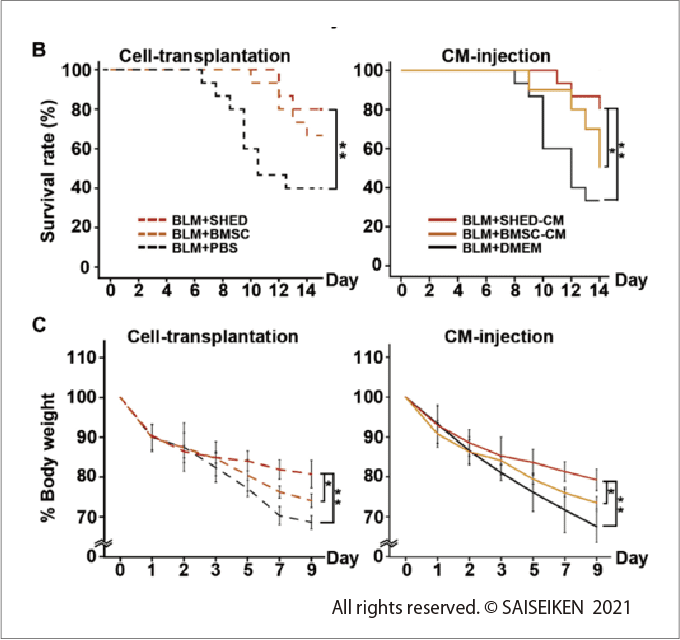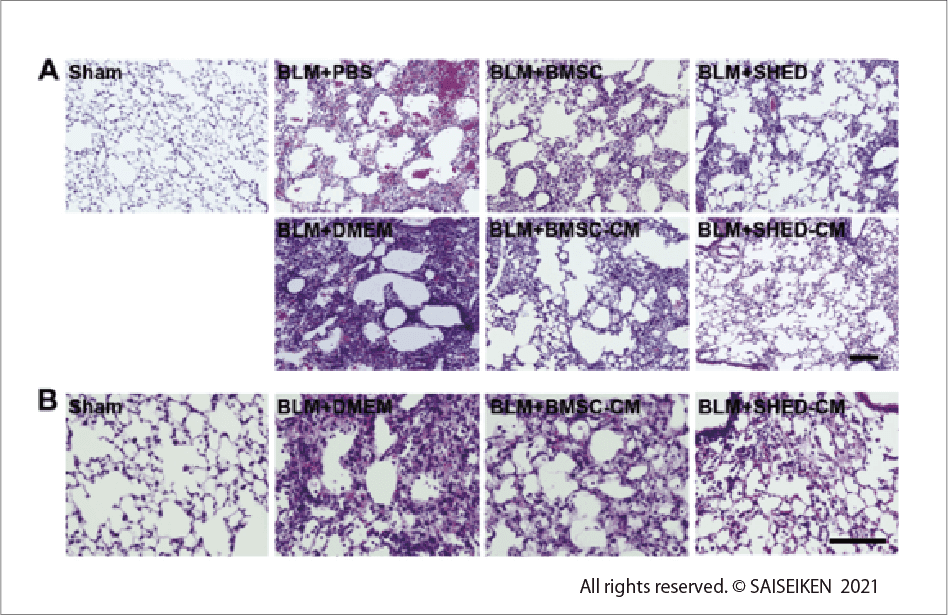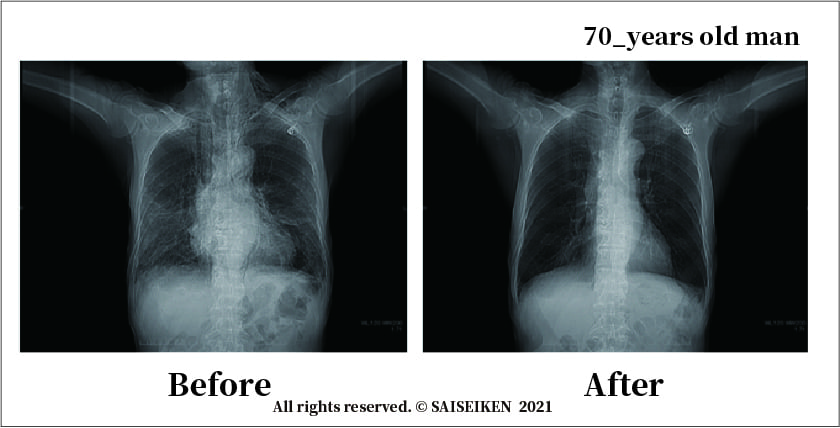Basic Research
- COVID-19 respiratory distress
The outbreak of 2019 novel coronavirus disease (COVID-19) worldwide is becoming rapidly a major concern. The number of severe cases has increased dramatically worldwide, while specific treatment option are scar.
The main pathological features of severe or critical COVID-19 were consist with acute lung injure (ALI) / acute respiratory distress syndrome (ARDS), characterized by cellular fibromyxoid exudates, extensive pulmonary inflammation, pulmonary edema, hyaline membrane formation., and irreversible lung fibrosis.
We evaluated the use of stem cell derived from human exfoliated deciduous teeth (SHED) or SHED-derived serum-free conditioned medium (SHEDCM) treatment as treatments for bleomycin (BLM)-induced mice acute lung injury (ALI), exhibiting severe pathogenic features associated with the human disease ARDS.
were examined for survival. The lung tissue was characterized by histologically.
( Wakayama,H. et al: Factors secreted from dental pulp stem cells shows multifaceted benefits for treating acute lung injury in mice, Cytotherapy, 0:1-11, 2015)
A single intravenous administration of SHED or SHEDCM attenuated the lung injury and improved the survival rate and body weight in BLM-treated mice. Similar recovery levels were seen in the SHEDs and SHEDCM
treatment groups, suggestion that the SHED improves ALI by paracrine mechanisms. SHEDCM contained multiple therapeutic factors involved in lung-regenerative mechanisms.
In this experiment we raise SHEDCM as a hopefully alternative therapy for severe or critical COVID-19.



Based on the experimental study, we applied SHEDCM for three patients ( 70,75,65 years old man ) with intestinal
pneumonia . Patients were diagnosed by CT examination and blood oxygen concentration and clinical features of sever
respiratory illness. All patients were dyspneic and had respiratory rates of more than 30 breaths per minute.
All needed oxygen supplement with Fio2 that was more than 40% , their Sp02 levels at room air were less than 86%,
and Spo2/Fio2 was less than 315. The inhalation therapy of SHEDCM by nebulizer to the patients for 14 days improved
their lung function ( Sp02 from 86% to 96% at room air).
The laboratory data recovered within normal limits from the time of SHEDCM administration until the time of discharge .
The lung CT scan of two patients showed significant resolution of opacities after completion of the SHEDCM therapy.
No opacities were visualized and the subpleural band , which were indeterminate as fibrosis , had complete resolution.









